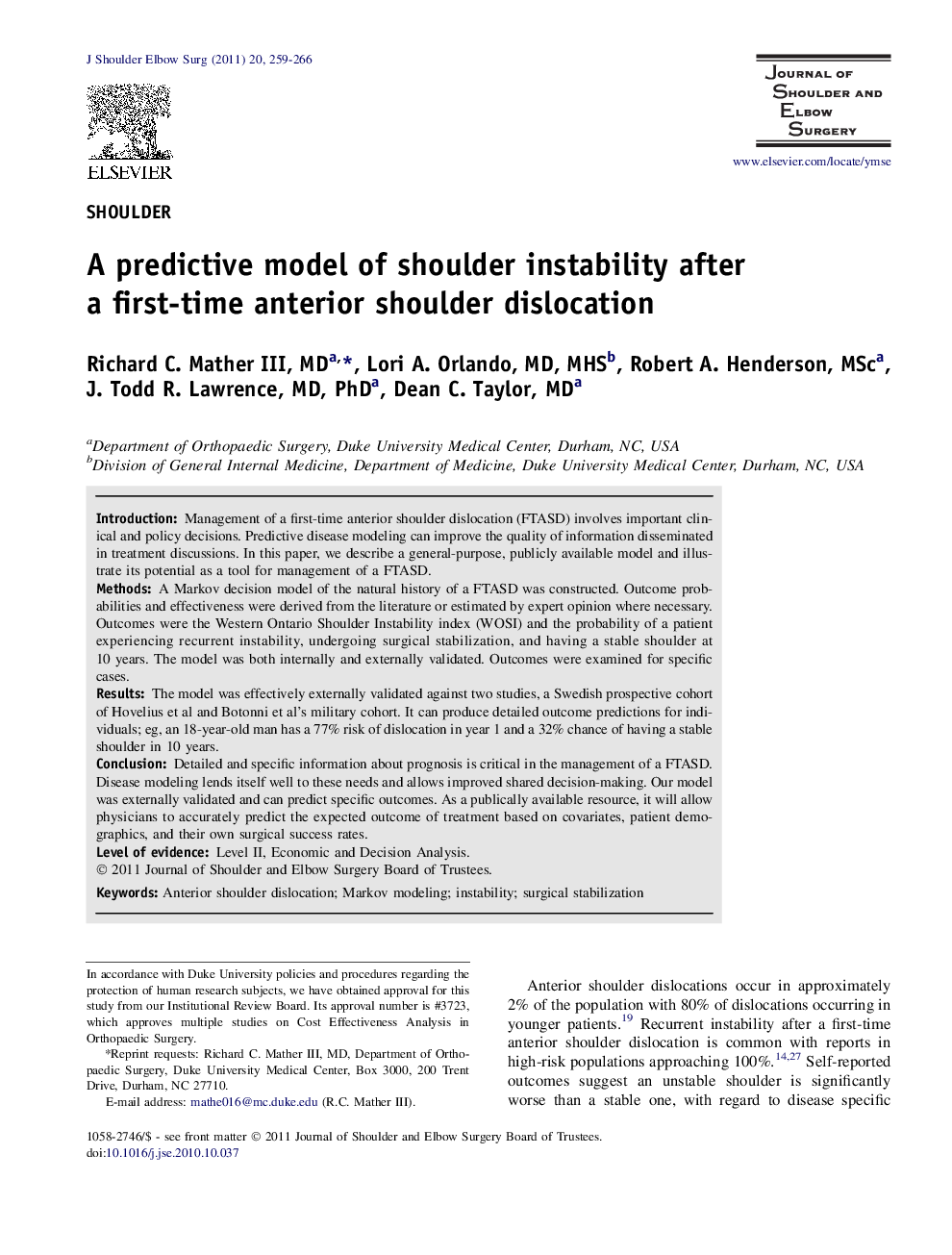| Article ID | Journal | Published Year | Pages | File Type |
|---|---|---|---|---|
| 4074874 | Journal of Shoulder and Elbow Surgery | 2011 | 8 Pages |
IntroductionManagement of a first-time anterior shoulder dislocation (FTASD) involves important clinical and policy decisions. Predictive disease modeling can improve the quality of information disseminated in treatment discussions. In this paper, we describe a general-purpose, publicly available model and illustrate its potential as a tool for management of a FTASD.MethodsA Markov decision model of the natural history of a FTASD was constructed. Outcome probabilities and effectiveness were derived from the literature or estimated by expert opinion where necessary. Outcomes were the Western Ontario Shoulder Instability index (WOSI) and the probability of a patient experiencing recurrent instability, undergoing surgical stabilization, and having a stable shoulder at 10 years. The model was both internally and externally validated. Outcomes were examined for specific cases.ResultsThe model was effectively externally validated against two studies, a Swedish prospective cohort of Hovelius et al and Botonni et al’s military cohort. It can produce detailed outcome predictions for individuals; eg, an 18-year-old man has a 77% risk of dislocation in year 1 and a 32% chance of having a stable shoulder in 10 years.ConclusionDetailed and specific information about prognosis is critical in the management of a FTASD. Disease modeling lends itself well to these needs and allows improved shared decision-making. Our model was externally validated and can predict specific outcomes. As a publically available resource, it will allow physicians to accurately predict the expected outcome of treatment based on covariates, patient demographics, and their own surgical success rates.
